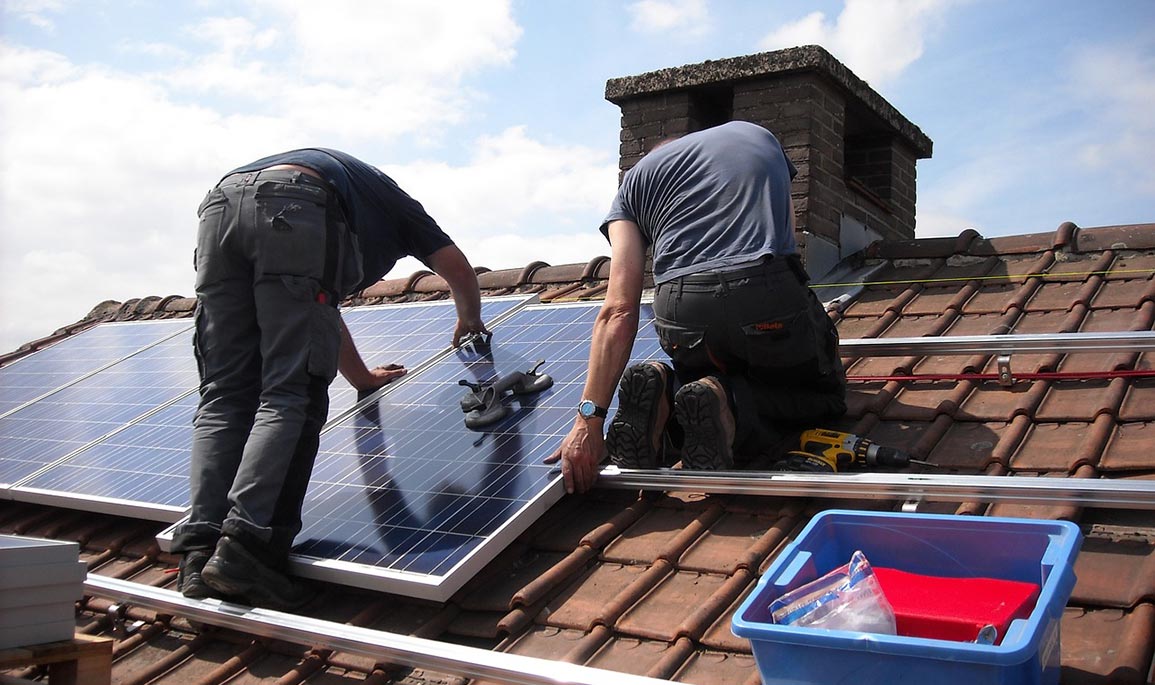When Building A New Roof What Material Used Are Good For Environment
In an era where environmental sustainability is more critical than ever, making eco-friendly choices in building materials is a significant step toward conserving our planet's resources. The roofing industry has seen a remarkable shift towards sustainable practices, offering various eco-friendly roofing options that not only reduce your carbon footprint but also provide efficiency and longevity. This blog explores some of the most sustainable roofing options available today, emphasising how each contributes to a healthier environment.

Green Roofs
Green roofs, also known as living roofs, are at the forefront of eco-friendly roofing solutions. These roofs are partially or completely covered with vegetation planted over a waterproofing membrane. Green roofs are excellent for urban areas as they act as natural insulators, reducing the need for heating and cooling. They also manage stormwater, improve air quality by absorbing CO2, and combat the urban heat island effect. By fostering biodiversity and providing a habitat for various species, green roofs contribute significantly to the local ecosystem's health.
Solar Roofs
Solar roofing, incorporating solar panels or solar shingles, is a game-changer in sustainable building design. Solar roofs generate clean, renewable energy directly from the sun, significantly reducing reliance on fossil fuels and lowering greenhouse gas emissions. The initial investment is offset by the long-term savings on energy bills, and in some cases, homeowners can even sell excess energy back to the grid. Solar roofs are a powerful statement in support of renewable energy and a practical step towards energy independence.
Metal Roofs
Metal roofing is a sustainable option due to its durability, longevity, and recyclability. Metal roofs can last up to 50 years or more with minimal maintenance, reducing the need for frequent replacements. They reflect solar radiant heat, which can reduce cooling costs by 10-25%. At the end of their life, metal roofs are 100% recyclable, ensuring that they don't contribute to landfill waste. Additionally, many metal roofing products are made from recycled materials, further minimising their environmental impact.
Recycled Shingles
Recycled shingles are made from waste materials like rubber from old tires, plastic, and wood fibre. These shingles offer a sustainable alternative to traditional roofing materials, diverting waste from landfills and reducing the need for new raw materials. Recycled shingles are durable, offering similar or superior performance to traditional shingles in terms of weather resistance and longevity. By choosing recycled shingles, homeowners can contribute to a circular economy that values reuse and recycling over disposal.
Cool Roofs
Cool roofs are designed to reflect more sunlight and absorb less heat than standard roofing materials. Made from highly reflective paint, a sheet covering, or highly reflective tiles or shingles, cool roofs can significantly reduce energy consumption for air conditioning, leading to lower carbon emissions. They also help mitigate the urban heat island effect, making them an excellent choice for warmer climates.
Clay and Slate Tiles
Clay and slate tiles are natural materials that offer exceptional longevity and durability. While the production process is energy-intensive, their long lifespan—over 100 years for slate and 50 years for clay—means that the energy input is amortised over many decades, reducing the environmental impact. Clay and slate tiles also offer natural insulation properties and can be recycled at the end of their life, further enhancing their sustainability credentials.
Wood Shingles and Shakes
For those seeking a natural look, wood shingles and shakes made from sustainably harvested or recycled wood are an attractive option. Wood is a renewable resource, and when sourced responsibly, its extraction has a lower environmental impact than the production of synthetic materials. Wood roofs also provide natural insulation, reducing energy consumption for heating and cooling. It's essential to choose wood treated for fire resistance and durability to ensure environmental benefits without compromising safety.
The Importance of Energy Efficiency and Durability
Regardless of the material chosen, two key factors in eco-friendly roofing are energy efficiency and durability. A roof that provides excellent insulation and reflects heat will reduce the need for artificial heating and cooling, lowering energy consumption and emissions. Similarly, a durable roof that lasts longer reduces the demand for new materials and the environmental impact associated with manufacturing and transportation.
Conclusion
As we strive towards more sustainable living practices, the choice of roofing material becomes crucial in reducing our environmental footprint. From green and solar roofs to recycled materials and natural options like clay, slate, and wood, there are numerous ways to make eco-friendly choices that benefit both the homeowner and the planet. By considering the environmental impact of roofing materials, we can take significant steps towards sustainable construction that supports a healthier, more resilient world.



